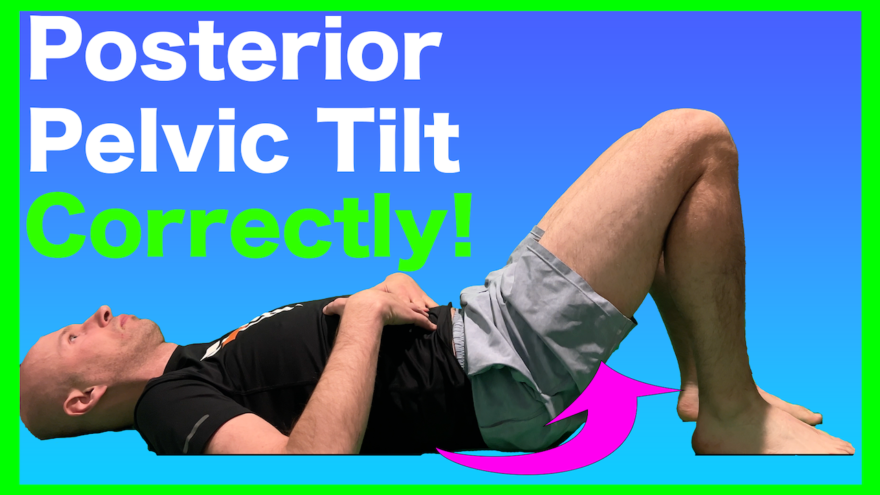Table of Contents
There’s a subtlety to properly executing a posterior pelvic tilt. You’ll learn it today
Posteriorly tilting the pelvis aka tucking the hips is a common strategy we use to enhance hip mobility and get the pelvis in a good position to load the legs during various exercises.
But are you someone who feels “the tuck” mostly in your abs, stretching your back, or working your quads?
I hate to break it to you…
You’re doing it wrong
Surprisingly, the posterior tilt needs to be WAY more subtle than you think to get the biomechanical actions we oh so desire.
Why so subtle? Don’t worry, I’ll explain EVERYTHING you ever needed to know about the posterior pelvic tilt.
Check the video and post below to learn more.
Biomechanics – What we are actually trying to do with a posterior tilt
If you are someone who presents with an anterior pelvic tilt AND limited hip mobility (e.g. loss of hip external rotation), chances are you’d be someone who would benefit from working on posteriorly tilting the pelvis.
What this action aims to do is alter the pelvic floor position in a manner that can promote increased range of motion throughout the body (what we call here, the stack). This action, coupled with an effective exhale, allows airflow and abdominal viscera to create a multidirectional expansion effect throughout the torso. If you can expand everywhere, then there’s a good chance your mobility will be INSANE.
Phew, I get a little juiced up just thinking about it (but I’m weird like that). I bet you do too, but you might be wondering how in the heck we can do it?
Subtly. Oh…so…subtly
When performing a posterior pelvic tilt, you merely want the front side of the pelvis (anterior) to move upward (superiorly), while the backside (posterior) should move downward (inferiorly).
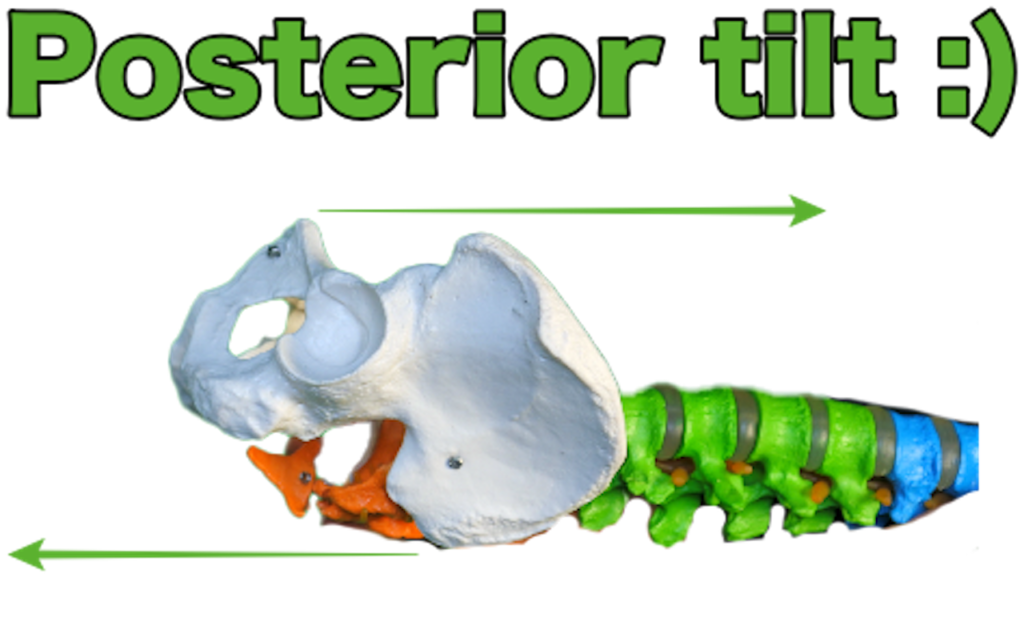
If you get it right (assuming you’re weight-bearing through the legs, you’ll feel the lower glutes/high hamstrings working. Why? Because these muscles perform that action.
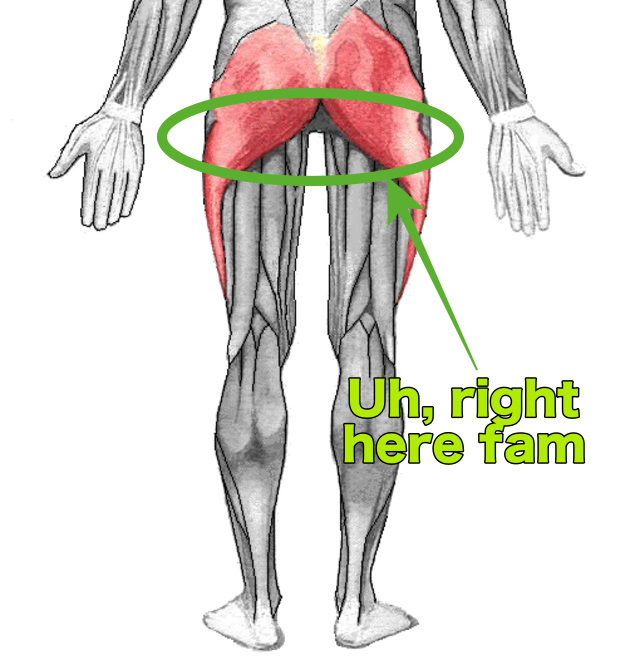
But in order to achieve this sensation, you have to do your darndest to isolate the movement to the pelvis, which it turns out is like, uh….SUPER TOUGH.
Instead, you may see peeps tilt the pelvis AND lower back as a unit (posterior orientation of the lumbopelvic complex). If you are someone who feels your back stretching or cramping during a pelvic tilt, or your abs pooch out chances are this is you.
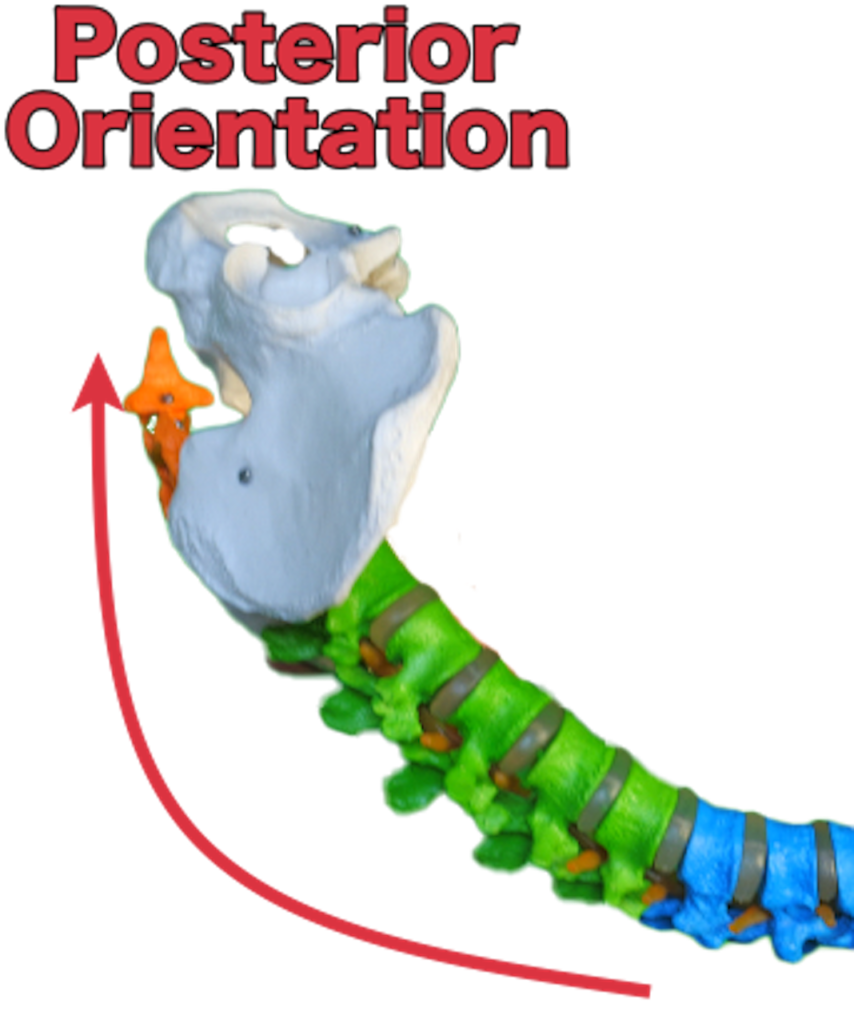
Another compensation you might see is the pelvic translating forward, which occurs with co-contraction of the glutes and lower back muscles. These folks often squeeze the glutes HARD to perform the tilt, as if they just finished a Chipotle bender.
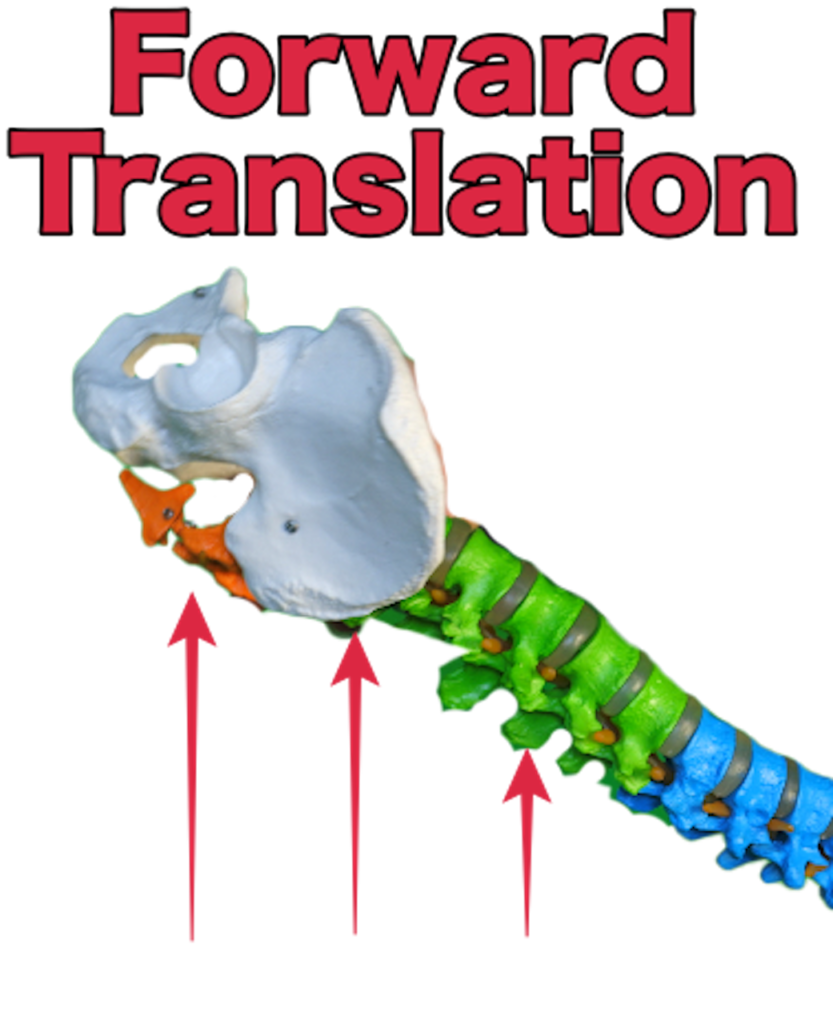
You’ll oftentimes see the ab wall get bigger (pooch belly) with this action.
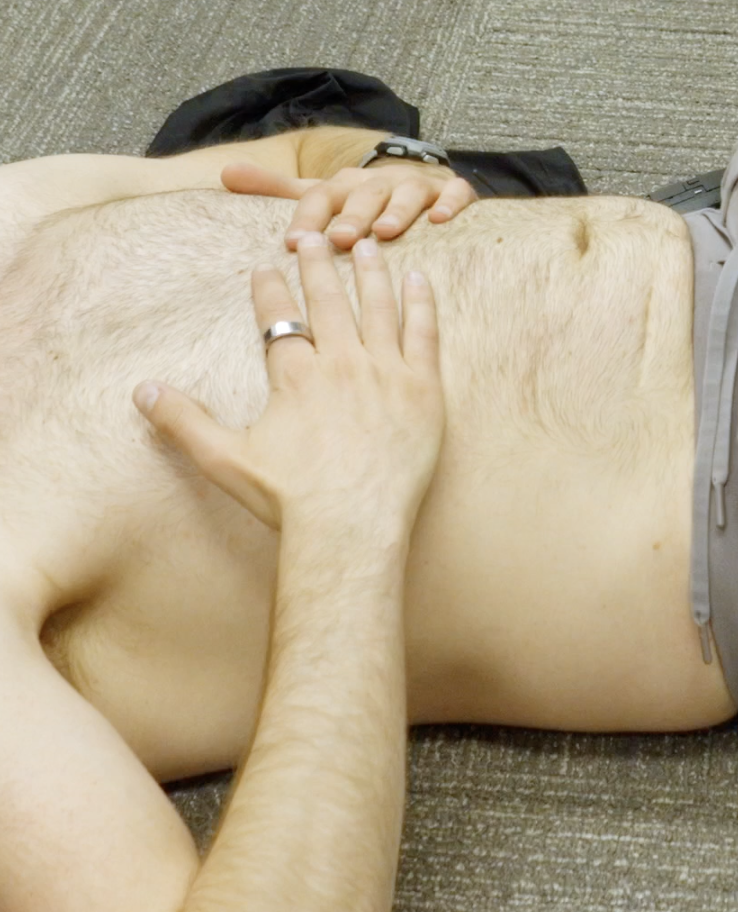
If the goal of the pelvic tilt is to position the pelvic floor to maximize mobility gains, then neither of these actions are desirable.
So what are we supposed to do instead?
READ ON!
Executing a posterior pelvic tilt
Don’t worry big fam, I got you covered on the proper execution of the posterior pelvic tilt.
For this, we can utilize the hooklying position to achieve our goal.
Some of the big steps you want to think about are as follows:
- Keep abs relaxed throughout this portion (I’ll use my fingers to monitor abdominal activity)
- Place a LITTLE bit of weight on the inside heels
- Think about subtly tucking/elongating the hips
- Keep the knees centered
- If you get it right, you’ll feel your lower glutes/high hamstrings working. If you can’t sense them, you can touch that area to see if they are in fact contracting.
To elicit the tuck the way we want to, I’ve found several cues to be effective. Pick the one that resonates with you:
- Imagine your back pockets being pulled down to your heels
- Belt buckle being pulled up to nose
- Push the knees straight forward
- Tailbone long
- Scoop the hips
- PEEL the hips off the ground
If you want to make the exercise a bit easier to perform, elevating the heels can be useful:
Common errors when performing a posterior pelvic tilt
Think you nailed it? MAYBE. There are several ways people will screw this up and cause the above compensations we discussed.
Below are some things we want to avoid:
- Actively squeezing the glutes and/or hamstrings (this will translate the pelvis forward)
- Contracting the abdominals
- Bridging up WAY TOO HIGH
- Digging the heels
- Lifting the heels up
- Pushing the knees way out or letting the knees cave in
- Having weight on the outside of the heels
Sum up
If you incorporate these tweaks to your tuck, I am confident AF that you’ll get a lot more out of tilting activities, and maybe even possess the loosest hips in the game.
To summarize:
- Posterior pelvic tilting is used to change pelvic floor position; allowing for greater mobility gains
- The tuck must be isolated to the pelvis only, with glutes and hamstrings being the major drivers
- Minimize incorporating the lower back or squeezing the glutes excessively
What struggles do you have with the pelvic tilt? Comment below and let the fam know!
